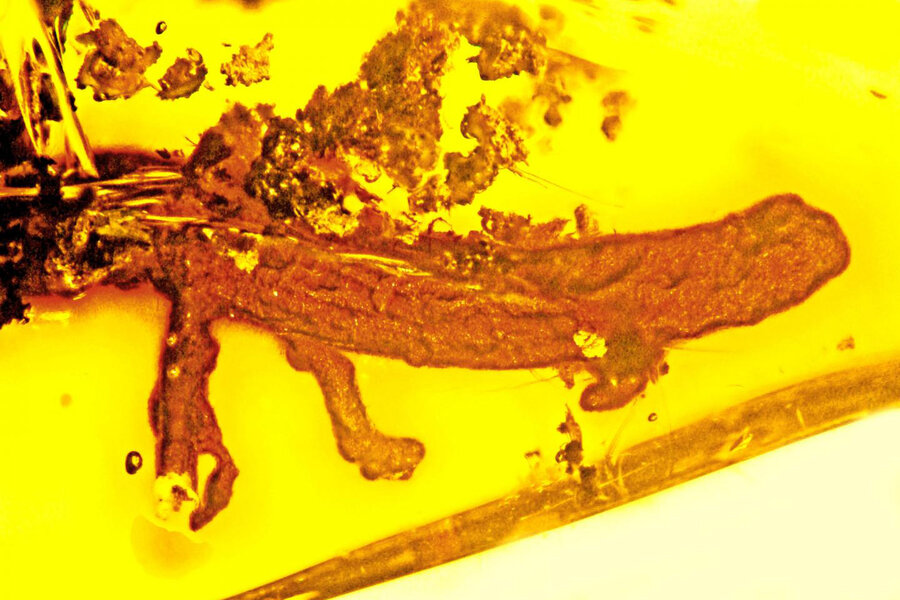Salamander trapped in amber could hold ancient Caribbean secrets
Loading...
A 20 million-year-old salamander is giving scientists clues as to what life on the island now known as the Dominican Republic looked like long before humans’ arrival.
The discovery of a tiny salamander preserved in amber is exciting for researchers at Oregon State University and the University of California at Berkeley for several reasons.
"There are very few salamander fossils of any type, and no one has ever found a salamander preserved in amber," George Poinar Jr. of Oregon State University's College of Science in Corvallis said in statement on Monday. "And finding it in Dominican amber was especially unexpected, because today no salamanders, even living ones, have ever been found in that region."
The salamander was named Palaeoplethodon hispaniolae by its discoverers, who published their findings in the journal Paleodiversity.
The family to which the salamander belonged can be found in North America, especially in the Appalachian Mountains, Discovery News reported. But this creature had webbed feet instead of distinctive toes, suggesting it was not an adept climber, and more likely inhabited small trees or tropical flowering plants.
The salamander was found in an amber mine between Puerto Plata and Santiago, Discovery News reported. The species probably found its way onto the island 40 to 60 million years ago, when the land in that region was still connected to North and South America.
As to how the species was eliminated from the region, "They may have been killed by some climatic event, or were vulnerable to some type of predator,” Dr. Poinar said.
Finding specimens like this one help scientists fill in the gaps of the earth’s history, he said in the press release.
"There have been fossils of rhinoceroses found in Jamaica, jaguars in the Dominican Republic, and the tree that produced the Dominican amber fossils is most closely related to one that's native to East Africa," Poinar said. "All of these findings help us reconstruct biological and geological aspects of ancient ecosystems."






